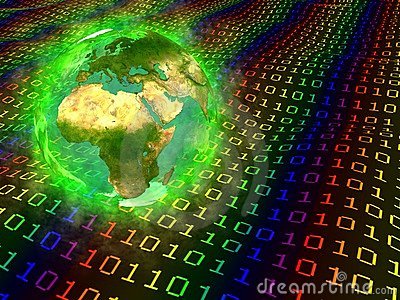Secessionist Movements and Ethnic Conflict: Debate-Framing and Rhetoric in Independence Campaigns
By: Beata Huszka
London and New York: Routledge, 2014
Despite years of meticulous research on secessionism we are still far away from producing definitive answers to some basic questions: Why do some secessionist movements succeed in establishing independent and sovereign states, when most fail? Why do some secessionists adopt violent tactics in their political struggle, whereas the majority remain confined to peaceful protests and parliamentary politics? Why do some movements for independence have a wide support base and others attract attention and backing from a specific, class, religion or ethnic-based grouping? Why do the leaderships of separatist and secessionist parties adopt broad-based messages likely to appeal to variety of individuals while other secessionist leaders operate with extremely narrow and exclusive discourses that entice the support of a very particular audience?
Beata Huszka’s Secessionist Movements and Ethnic Conflict aims to address some of these questions by focusing on differences in the rhetoric of political mobilisation used by variety of secessionist movements. More specifically, she is interested in the links between: The rhetorical frames adopted by particular movements, the success of secessionist projects and the presence of violent or non-violent outcomes during the political mobilisation for independence. In this context, Huszka explores how these rhetorical discourses change and why some secessionist movements opt for the more exclusive definitions of their potential constituents, while others develop much more flexible and inclusive understandings of their support base. Moreover, she examines why some secessionists focus on the economic arguments for independence (i.e. financial exploitation by the central state, the increasing costs of existing union, the asymmetric distribution of wealth that privileges one ethnic group/region over others, etc.); why some invoke the ethno-cultural reasons (i.e. the preservation of national language and cultural traditions) while others emphasise the political issues (i.e. the lack of democratisation and infringement of human rights); and why many secessionists pinpoint security considerations (i.e. the existential threat posed by the majority group or the centralised state).
Huszka’s principal goal is to explain the changing dynamics of secessionist framing and in particular why different movements employ different farming strategies. One of her key arguments is that “the perception of an internal threat associated with the presence of an ethnic majority in the seceding entity determines whether collective identity will be framed in an ethnically inclusive or exclusive way” (p.4). Furthermore, she also identifies two other variables that play a central role in the dynamics of secessionist framing: The demographic factor and the presence of an ethnic minority that is politically allied with the centre or the neighbouring hostile polity. In Huszka’s view, ethnically homogenous and highly heterogeneous populations tend towards adopting ethnically inclusive secessionist rhetoric, whereas partly heterogeneous polities are more prone to ethnic exclusivism. The presence of a potentially threatening ethnic minority within the movement’s midst is seen as further contributing towards the rhetoric of exclusivity and intolerance.
Much of this book is devoted to testing these propositions on the concrete empirical material. Huszka provides a comparative analysis of rhetorical frames through her examination of the independence campaigns in Slovenia and Croatia at the end of 1980s and at the beginning of 1990s, and in Montenegro in the early 2000s. Since these three case studies are all examples of successful secessionist movements resulting in the establishment of sovereign states, she also briefly explores East Timor, Aceh, Catalonia and the Basque country to assess the validity of her central arguments in contexts where full independence has not been achieved.
The Diversity of Secessionism
This is an interesting and insightful book that demonstrates the inherent complexity of discourse construction in the campaigns of independence movements. Huszka offers a meticulous analysis of different rhetorical strategies developed by a variety of secessionist movements and in this way challenges popular and some academic perceptions that all secessionist arguments are similar if not identical. This is well illustrated by her subtle comparisons and contrasts of mobilisation processes in Slovenia, Croatia and Montenegro. I thought that the chapter on Croatia was particularly well argued as it deftly captures the changing dynamics and interdependence of the political rhetoric deployed by the various Croatian organisations and the Serbian minority movements in Croatia.
Despite Huszka’s ambition to develop a universal theory for the analysis of secessionism worldwide, it seems that this model works much better as a set of principles applicable to a particular type of secessionist movements – those that arise in the context of a severely weakened federal state. One of the issues that looms large but is not addressed in the book is the relationship between the central authority and the secessionist movement/s. For example, the bulk of her book is devoted to case studies where secessionism came about as a result of state collapse. As Huszka recognises, neither Slovenia nor Montenegro had long histories of independence claims. Even in Croatia, which had more of a history of separatism, secessionism was not seriously contemplated, even at the very onset of the federal state collapse. This was well illustrated by the available public polls, all of which indicate that even in early 1990 an overwhelming majority of the populations of Slovenia, Croatia, and Montenegro (in this case well until the early 2000s) were in favour of retaining some form of the joint Yugoslav state.[1]
I therefore argue that it was the broader context of state collapse that gave impetus to secessionist aspirations. In this context, the Yugoslav cases resemble those of Czechoslovakia, the Soviet Union, Ethiopia, and Eritrea, where secessionism was the direct outcome of state collapse brought about by large scale geo-political transformation. It is interesting to note here that all available survey and poll data conducted just before the Czech and Slovak parliaments declared independence (without any referenda) also showed that the majority of Czech and Slovak citizens were in favour of maintaining the joint state.[2] This, I would argue, seems very different to the polities where secessionism has a much longer tradition and is not so directly linked to the strength or weakness of the central state. Huszka’s own examples of Basque, Catalan, Aceh and East Timor are all instances of independence movements developing and expanding within the context of strong and relatively stable states (Spain and Indonesia). In the Catalan and Basque examples and furthermore in Scotland, Quebec, and Flanders, one could even go further and argue that secessionism expanded together with the rise of, what Michael Mann would call, infrastructural powers of the central state. I would argue it is important to differentiate these two very different forms of secessionist experiences and to acknowledge the central role of geo-political change in generating secessionist outcomes.
Rhetorical Framing
Another issue that requires more attention than Huszka gave it in her book is the underlining assumption that rhetorical framing is the central causal factor in explaining the direction and outcome of the specific secessionist project. Huszka argues that rhetorical frames shape social action: “citizens internalise the system of classification and mental structures offered by that discourse” (p. 7), and “economic arguments automatically create inclusive identities” (p. 10). This assumption is problematic for two reasons. For one thing it is based on epistemological idealism, which understands human beings as norm driven creatures, whose behaviour is the simple reflection of their beliefs and values. While discursive frames certainly contribute to the complexity of social action, it is hard to argue that they represent the only or the dominant factor governing human behaviour. Since Max Weber, scholars have been aware that social action rests on variety of sources: Instrumental rationalism, value rational action, emotions, habitual behaviour, etc. Hence there is nothing automatic and self-explanatory in social action. Another closely related issue is the lack of evidence to assess the impact of discursive framing. While it is clear that Huszka’s focus is on the changing dynamics of rhetoric used to gauge the popular reception of such rhetoric, one cannot simply assume that the two are neatly correlated. Thus without adequate and reliable proof, one should not make such strong claims about citizens’ allegedly unproblematic internalisation of particular discourses or about the automatic creation of specific identities.
This analytical nonchalance is also visible in the discrepancy between the theory and empirical analysis. One the one hand, Huszka adopts a social constructivist approach and accepts the key principles of this epistemological position, which, among other things, insist on the malleability of social identification, plasticity and diversity of group ties and the impact institutions have in shaping social relations (p. 5). On the other hand, her empirical chapters are completely dominated by the hard, objectivist, essentialist and what Brubaker would call groupist, conceptual apparatus. [3] Therefore in her empirical analysis, ethnic groups are conceived as mutually exclusive entities that struggle over territory or resources and whose demographic position determines the likelihood of inter-group conflict. For example, she writes about how “ethnically exclusive national identity characterised Croats up until the first democratic elections” (p. 68), how “people seek self-determination” (p. 2), how “Croatian people were most receptive to the ethnic security frame” while “Croatian Serbs were interested in compromise” (p. 94-5), or how “the argument boiled down to a disagreement between Slovenes and Croats on the one side and Serbs on the other” (p. 33) etc. No consistent social constructivist could perceive ethic groups and nations in such a uniform way. Rather than speaking about millions of people as having a single will, ambition, or purpose it is crucial to differentiate between diverse social movements and organisations that tend to speak as a particular uniform collective. I don’t think it is worthwhile, or even possible, to reconcile – which is Huszka’s aim – such incompatible approaches as essentialist groupism of Horowitz and Collier with the social constructivist propositions that are built into the frame and discourse analyses.
This neglect of inherent diversity is also visible in Huszka’s overemphasis on the singular discursive frames, which are attributed to entire ethnic or political groups. Thus, she associates the ethnic security frame with Croatian independence and the frames of democracy and prosperity with the Slovenian and Montenegrin secessionisms. However, it is important to emphasise that in each of these cases there were competing discourses within the dominant frame. It is not completely clear why some social movements and organisations have managed to impose themselves as the most trustworthy representatives of a particular frame, while others have not. For example, in the Croatian and Montenegrin cases the Croatian Party of Rights (HSP) and the Liberal Party of Montenegro were respectively early and loud exponents of the ethnic security frame. However, it was the Croatian Democratic Community (HDZ) and the Democratic Party of Socialists of Montenegro (PDS) which ultimately attained and maintained the mass popular support utilising several different frames. One of these frames was the ethnic security frame which was re-appropriated and later monopolised by HDZ and PDS.
Regardless of these critical remarks there is no doubt that Huszka has produced a high quality study that will appeal not only to the students and scholars of secessionist movements and ethnic conflicts, but also to all those interested in discourse and rhetoric framing processes.
—
Siniša Malešević is a Professor and Head/Chair of Sociology, University College, Dublin. His most recent publications include Nation-States and Nationalisms: Organisation, Ideology and Solidarity (Polity, 2013) and with John A. Hall (eds.) Nationalism and War (Cambridge University Press, 2013).
[1] See S. Malešević (2002) Ideology, Legitimacy and the New State: Yugoslavia, Serbia and Croatia. London: Routledge; S. Malešević and G. Uzelac (2007) Nation-State without the Nation? The Trajectories of Nation-Formation in Montenegro. Nations and Nationalism 13(4): 695-716.
[2] According to the latest poll conducted before the dissolution only 37% of Slovaks and 36% of Czechs favoured dissolution of the federal state (H. Kamm, “At Fork in Road, Czechoslovaks Fret”, New York Times, 9 October 1992).
[3] See R. Brubaker (2004) Ethnicity without Groups. Cambridge, MA: Harvard University Press. S. Malešević (2006) Identity as Ideology: Understanding Ethnicity and Nationalism. New York: Palgrave.





